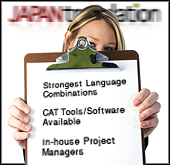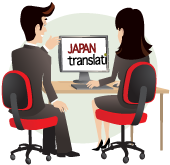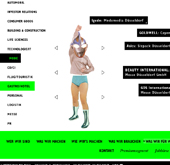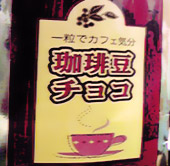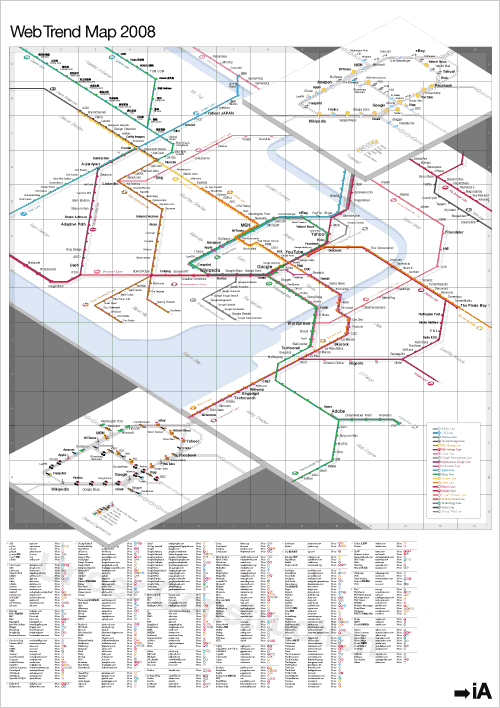
Part one of our five-part series on international copywriting
Whether you’re a small business owner, an advertising/PR agency professional or a corporate marketing executive, how you approach the process of translating persuasive copy – annual reports, advertising, web copy or press releases – can make or break international marketing efforts. Find out how and why companies outsource copywriting to translation agencies more often lately. And, learn more about common pitfalls you must avoid in your next copy translation project.
Translation for persuasion
Most of us in the translation services business can list some hilarious instances when clients have come to us with overly literal translations that had been done by novice freelancers. When the original English ad copy for high-priced women’s accessories includes the expression “Love makes the world go ’round,” translations in other languages may use entirely different local idioms to correctly carry a similar feeling and convey the attitude that’s supposed to attach to the product line advertised. The original idiom, after all, is supposed to answer the question “How great is love?” It’s not supposed to attempt to explain the physics of whatever it is that actually causes the earth to spin on its axis. Dull, un-persuasive or nonsensical examples of literally translated copy may seem funny to us after the fact – but not funny to the company who runs that copy in an expensive, glossy, four-color print ad to introduce their new line to the lucrative, yet discerning, Japanese market.
The goal of translating copy for a new country, language and culture shouldn’t be to say exactly the same thing in all languages. In fact, you can’t say exactly the same thing in every language. The goal is to get equivalent reactions in each language. It’s not always an easy task, but executed correctly – the payoff is well worth the extra care.
So, we’ve put together a series of blog articles designed to help anyone who needs to have persuasive copy, such as sales, marketing or advertising materials, translated for targeted overseas readers. We’ve pooled our collective knowledge, gleaned from our experience as an agency that handles a whole lot of English-to-Japanese translation and from our broader network of partners. If you don’t have time to read the series in its entirety, just save the following nugget of wisdom: Copy rewrites in foreign languages require more of your involvement and cost more than basic translation orders…but it transfers the marketing value that your team has already created to millions more existing or potential customers, so it’s sooooo worth it. The key is to make sure that the copy’s meaning is not lost in translation.
Why is this such a big deal?
Whether you’re translating annual reports, advertisements, website text or press release copy, consider all the work that went into the original. Your team most likely arrived at the copy through a long versioning process, may have run the versions past focus groups, probably made multiple revisions and finally had to get approvals from at least one or two main stakeholders. If you hope to make the same impact across international markets, we have an inconvenient truth to share with you: That creative process has to be revisited by native teams in each target language and culture.
Sounds exhausting and costly, right? Don’t panic! Repeating the process for new languages can go much faster than the first time. In fact, you’re partway there if you make it a habit to preserve some kind of background documentation such as the original copywriting brief and meeting notes for each new campaign (being a packrat pays off!), and you make sure to show translation vendors the visuals that accompany the copy in the campaigns you have them translate. Then, it’s only a matter of having each native team revisit your goals in the context of the target market.
This re-run of the creative process pays off. We promise. When you’ve already invested in developing a killer marketing campaign in one language, you’re practically assured to increase the value of that investment by localizing the copy for other languages. For example, does your company’s website (or your client’s website) truly speak to 70 million Japanese web users? If not, why not? The advantages of localizing copy are clear. You can significantly multiply the reach of any campaign.
Common global copywriting pitfalls
But before you start, it’s a good idea to know the most common pitfalls to avoid:
Pitfall #1: Choosing the wrong translation company
Of course, if you have the budget, you may want to consider the option of going to a local ad agency in each country you’re campaign targets. There are ad agencies that’ll help you with translation, and translation agencies that’ll help you with advertising. And, as the world becomes smaller, there are “adaptation agencies” springing up that are a kind of cross-breed. (Learn more about adaptation agencies here.) But the tips we’re offering here assume you’re working with a translation agency.
There are many translation companies out there – but not all of them are a good fit for you and your goals. It’s critical to find a vendor that matches your specific project and has the right experience, work style and copywriting processes to handle the project smoothly and successfully. What worked for your friend’s company or project might not work for you. Our own translation firm is one of the fastest growing agencies in Japan, but we know that we’re not the best fit for all projects – and we’re not afraid to tell people that. Our advice: Find the right match for your company. Know enough about the process to help guide the project, so it meets your goals. We know you’re reading this and wondering what criteria to use. Right? Well, there are too many to explain in this one modest little introductory post. So, we delve into this more in this post – but, as you plan your project, compare possible vendors carefully.
Pitfall #2: Being unprepared when placing a translation order
This sounds obvious, but the way that you work with a translation agency greatly affects your results. The more direction you give your translation services team, the clearer your goals and the more background materials you can provide – the better. Unless you work with a high-end adaptation agency, you’ll need to put a bit of thought and effort into the way you outsource your translation order. Check out our detailed advice on this right here in this post.
Pitfall #3: Overlooking the professional distinction between translation and copywriting
We have this straight from the experts. Last year we approached a well known American copywriter to see if she would review our own translation company website on her blog. We were delighted that she accepted! The Copywriting Maven usually turns such requests away. We were in luck.
She made some key points about multilingual copywriting that identify exactly why it matters who you choose as your vendor:
Copywriters know that writing powerful, persuasive copy is tough enough when English is your first language. This is especially true when writing conversationally and that actually can add a second layer of difficulty. Common slang, figures of speech, and subtle shades of meaning are what we weave together to get our prospects and customers nodding, resonating and responding to our messages.
Which makes the whole process of translation so dang hard and fraught with peril. When we transport our advertising messages from their native language base to another language – with its own slang and common understandings – well … we can only guess at the magnitude for ourselves and our clients if mistakes are made.
When you need persuasive copy translated, make sure that your translation vendor understands that you want native copywriting, not just translation.
Pitfall #4: Ignoring or downplaying special sensitivities and cultural differences
Cultures vary greatly – especially when you’re talking about Western vs. Eastern cultures. Sure there are social, industrial and occupational subcultures that transcend East/West, but within these demographic groups are even more specialized subsets of buyers, both B2B and B2C – buyers who have to be approached in a specific, culturally savvy way to indentify personally with your product or service. For large, corporate campaigns you may need to outsource to multiple, specialized vendors – branding/marketing, translation, etc. – to work on strategy or setup additional focus groups. Of course if your campaign is smaller and simpler maybe you don’t need such a huge team, but just know that specialized markets require specialized approaches. Ignore this at your peril! (Check out this post to read a case study of one company that mastered this.)
OK – so that’s a brief look at what NOT to do. We hope this post hasn’t filled you with anxiety. Better to dwell on the positive results you can expect when you get your campaigns translated right. The more you globalize your copy the more you’ll feel “The sky’s the limit!” So, stay tuned for more tips on what TO DO and learn how to get the most out of your translation project. And, please take a minute to leave a comment or question. What other common pitfalls have you encountered in the copy translation process? Do you have any funny or scary translation horror stories to share? Scroll down to the comments box and let us all in on it!
About the authors




